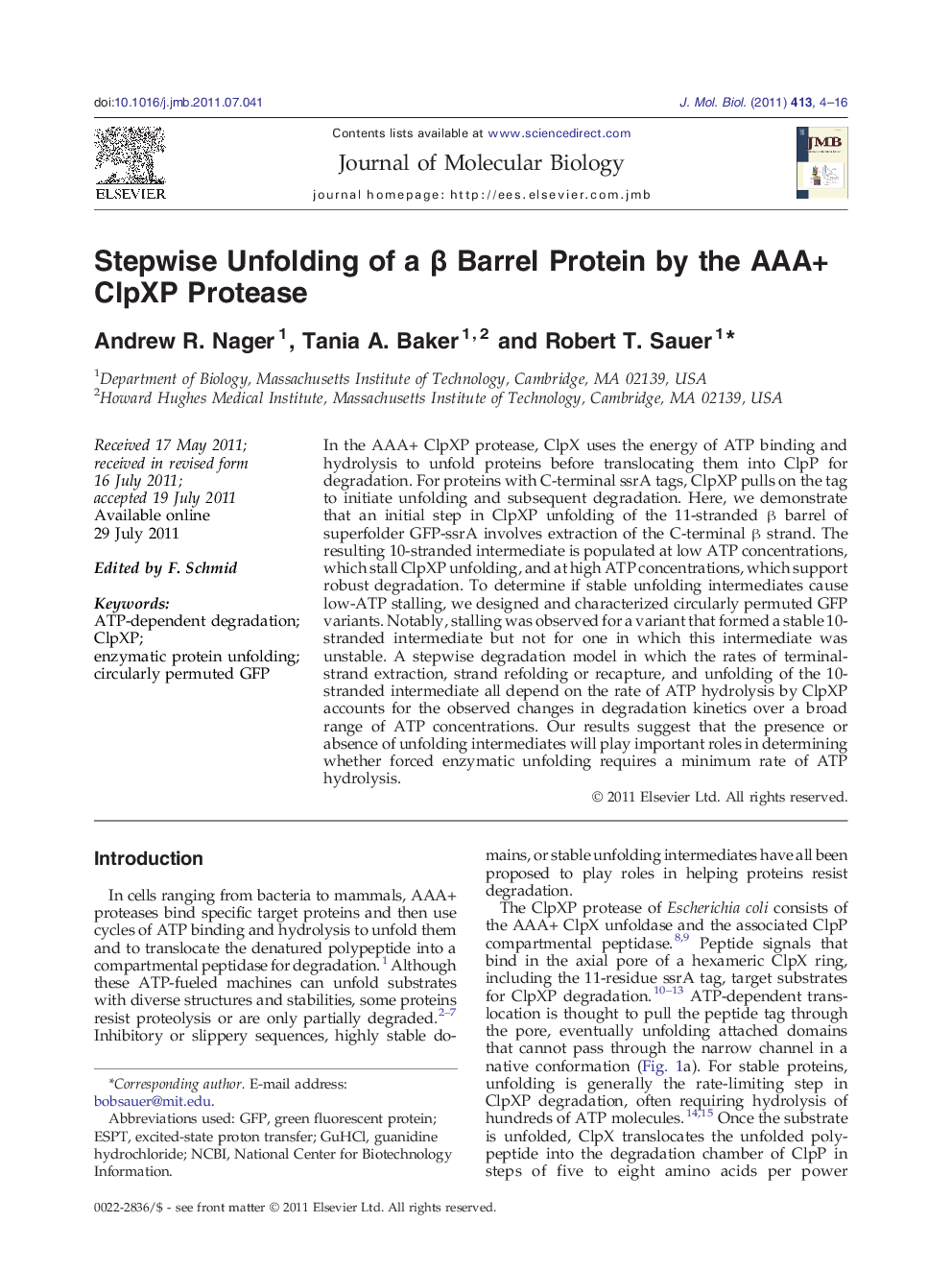| Article ID | Journal | Published Year | Pages | File Type |
|---|---|---|---|---|
| 2185052 | Journal of Molecular Biology | 2011 | 13 Pages |
In the AAA+ ClpXP protease, ClpX uses the energy of ATP binding and hydrolysis to unfold proteins before translocating them into ClpP for degradation. For proteins with C-terminal ssrA tags, ClpXP pulls on the tag to initiate unfolding and subsequent degradation. Here, we demonstrate that an initial step in ClpXP unfolding of the 11-stranded β barrel of superfolder GFP-ssrA involves extraction of the C-terminal β strand. The resulting 10-stranded intermediate is populated at low ATP concentrations, which stall ClpXP unfolding, and at high ATP concentrations, which support robust degradation. To determine if stable unfolding intermediates cause low-ATP stalling, we designed and characterized circularly permuted GFP variants. Notably, stalling was observed for a variant that formed a stable 10-stranded intermediate but not for one in which this intermediate was unstable. A stepwise degradation model in which the rates of terminal-strand extraction, strand refolding or recapture, and unfolding of the 10-stranded intermediate all depend on the rate of ATP hydrolysis by ClpXP accounts for the observed changes in degradation kinetics over a broad range of ATP concentrations. Our results suggest that the presence or absence of unfolding intermediates will play important roles in determining whether forced enzymatic unfolding requires a minimum rate of ATP hydrolysis.
Graphical AbstractFigure optionsDownload full-size imageDownload high-quality image (181 K)Download as PowerPoint slideResearch Highlights► ClpX extracts the C-terminal β strand of GFP-ssrA first, leaving a 10-stranded barrel. ► The strand-extracted intermediate is populated during ClpX degradation. ► Refolding of the extracted strand is favored at low ATP, causing degradation to stall. ► Low-ATP stalling is not observed for one circularly permuted GFP variant. ► The strand-extracted intermediate is unstable for this nonstalling substrate.
